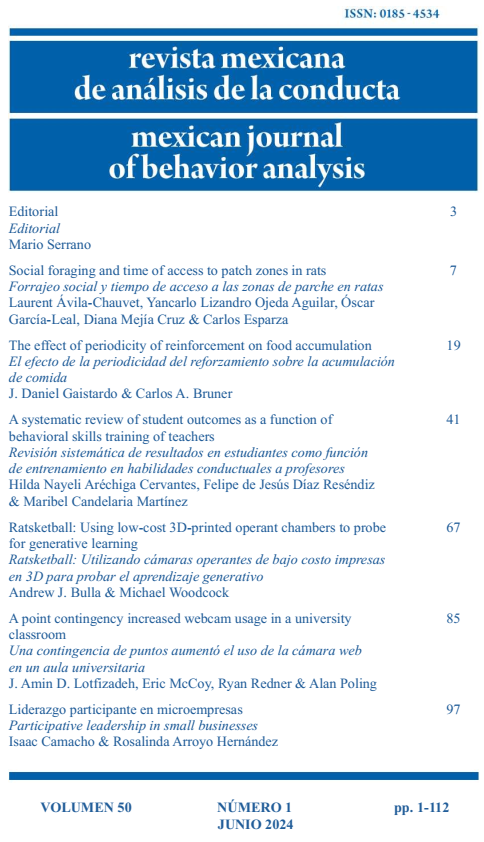Social foraging and time of access to patch zones in rats
Main Article Content
Abstract
In social foraging situations, some group members tend to search their food sources (producers), while others tend to join a previously discovered food source (scroungers). Rate maximization model and agent-based models predict that the proportion of scroungers within the group should increase as the finder share decreases. We propose a novel experimental preparation to study the effects of the finder share on the proportion of scroungers in a social foraging situation by controlling the access time to the patch zones. As the access time to discovered patch zones decreased, the opportunity to join patch zones decreased too, and the finder share increased. Our results matched the models’ prediction in the sense that the proportion of producer responses decreased, and the number of scroungers increased as the access time to the patch zones increased.
